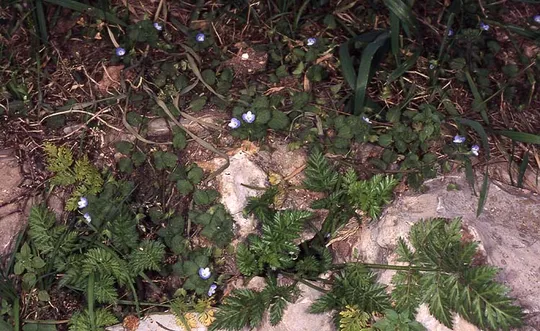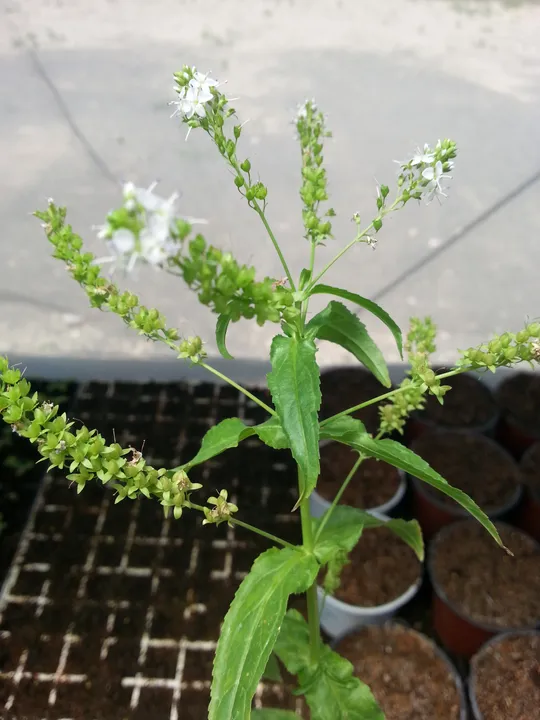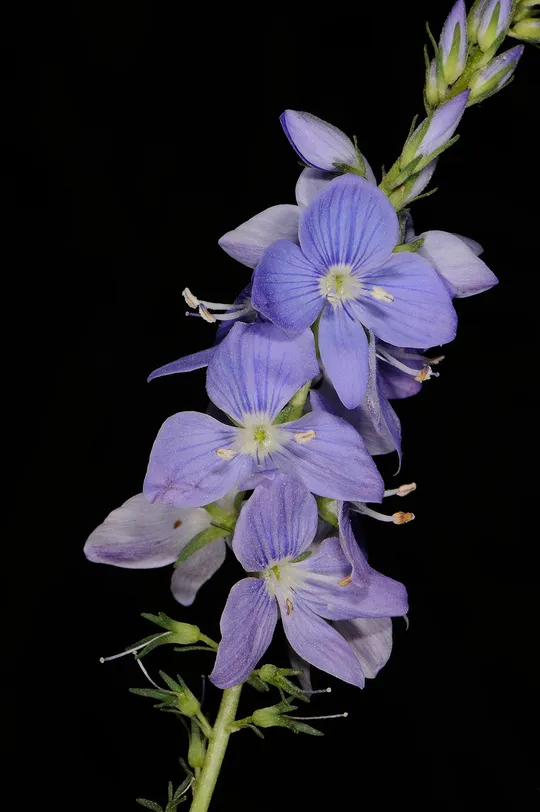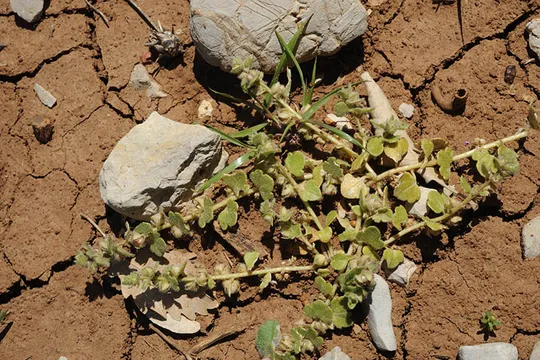Pimpernel Speedwell
Veronica anagalloides
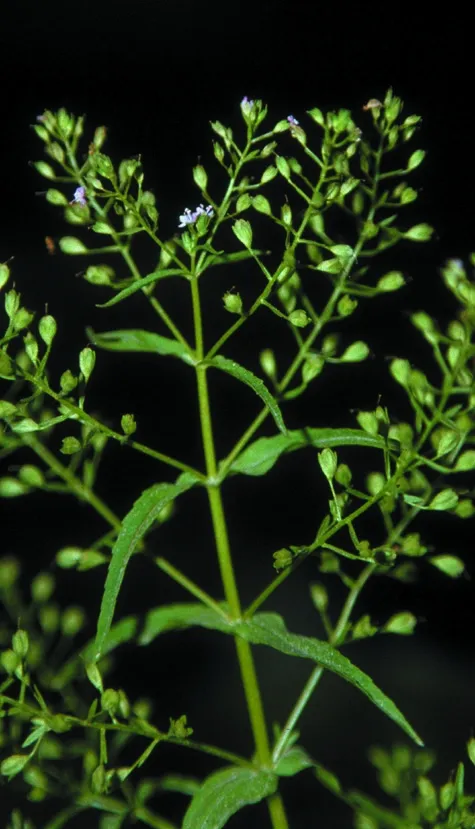
Veronica anagalloides was once found in Israel at nine sites located in six regions: the Golan, Hula Valley, Upper Galilee, Acre Valley, Jezreel Valley, Sharon and Philistine Plain. In the Flora Palaestina the species is also noted from the lower Jordan Valley, but we did not find any evidence of it. In four of the regions in which it was recorded in the past it is probably extinct: the Philistine Plain (Wadi Rubin), the Sharon (Wadi Poleg), the Upper Galilee (between Hurfesh and Peki’in) and the Jezreel Valley (near Tel Yosef). It is very difficult to distinguish the species from V. anagallis-aquatica, which puts in doubt the veracity of the existing geographic distribution data on V. anagalloides, as it may be a result of mistaken identification of V. anagallis-aquatica.
Marshes, springs and streams with slow-flowing water.
The genus Veronica is a large genus that includes 300 species, whose main distribution area lies in the temperate areas of the northern hemisphere – Eurasia and North America.
V. anagalloides belongs to a systematic group of V. anagallis-aquatica, which is the commonest Veronica species in Israel's wetland habitats. These species grow over large areas of the world on all continents – in tropical and temperate areas, but only in wetland habitats. In all the species, the leaves and lower stalks are immersed in water, and the inflorescence protrudes above them. In wetland habitats V. anagallis-aquatica is one of the most successful and dominant species, together with the genera Nasturtium and Apium. In the Middle East, some separate V. anagallis-aquatica into a number of subspecies: V. a.aquatica, V. a.lysimachioides, V. a.scardica and more. The diagnostic signs in each population are very variable. Thus, in Europe it is easy to distinguish between V.a. lysimachioides and V. anagalloides, whereas in Israel forms similar to all three species mentioned above can be identified in the same population. In northern Israel, in the Hula Valley and in many wetlands in the Golan, Veronica is a very common plant, forming dense populations. In these populations plants with petiolate leaves, denser inflorescences, some unilateral, can be clearly seen. This is the reason why V. lysimachioides was not defined as a distinct taxon in the red plant list. This species was formally recorded only from the Hula Valley (and from a single site in the Upper Galilee) and is probably not a distinct species in Israel.
A number of experts in Israel believe that V.anagalloides and V. anagallis-aquatica should be combined. Others think that V. anagallis-aquatica and V.anagalloides are indeed two distinct sympatric species, i.e. grow together in the same wetlands. V. anagallis-aquatica has larger flowers and broader leaves with a wide base. It is advisable to check for variation within populations that include both species, or alternatively examine whether the features listed above are constant and separate between the different populations. This information will help decide if V.anagalloides is a distinct, separate species in Israel.
Assuming that the Veronica anagalloides is a distinct species, then it has become extinct in four regions, and no doubt has completely disappeared from the coastal plain. Despite the taxonomic uncertainty, we recommend considering it a red plant at this stage. Determining the global risk also depends on the precise identification of the taxon. Nevertheless, the extinction of the populations that have been identified as belonging to this species reflects the great damage suffered by wetlands in Israel.
A field survey together with a thorough taxonomic study should be conducted to discover what the systematic relationships between Veronica anagallis-aquatica, V. anagalloides and V.lysimachioides are. If indeed V.anagalloides is a distinct species, separate from V.lysimachioides – it is recommended it should be allocated two nature reserves (Enan Stream and Wadi Poleg), where the populations can be monitored while studying the ecological and demographic relationship between them and Veronica anagallis-aquatica.
Veronica anagalloides has a broad global distribution. It grows throughout the Mediterranean Basin, in Europe and in the northern Middle East.
V. anagalloides is an aquatic plant very close to Veronica anagallis-aquatica. Because of the problematic systematic status, the results of the taxonomic study and the field survey should be received before implementing any conservation action.
Current Occupancy Map
| 1000 squre meter pixel | 5000 squre meter pixel | 10000 squre meter pixel | |
|---|---|---|---|
| number of observations | 0 | 0 | 0 |
| in total pixels | 0 | 0 | 0 |
| Family | Scrophulariaceae |
| Classification | On the endangered species list |
| Ecosystem | Mediterranean humid |
| Chorotype | Euro – Siberian (Mediterranean and Irano – Turanian) |
| Conservation Site | Enan Stream, Nuhela Springs |
| Rarity |
1
3
6
|
|---|---|
| Vulnerability |
0
4
4
|
| Attractiveness |
0
0
4
|
| Endemism |
0
0
4
|
| Red number |
1
4.2
10
|
| Peripherality | N |
| IUCN category | DD EW EX LC CR EN VU NT |
| Threat Definition according to the red book | Endangered |
 Based on:
Based on:
